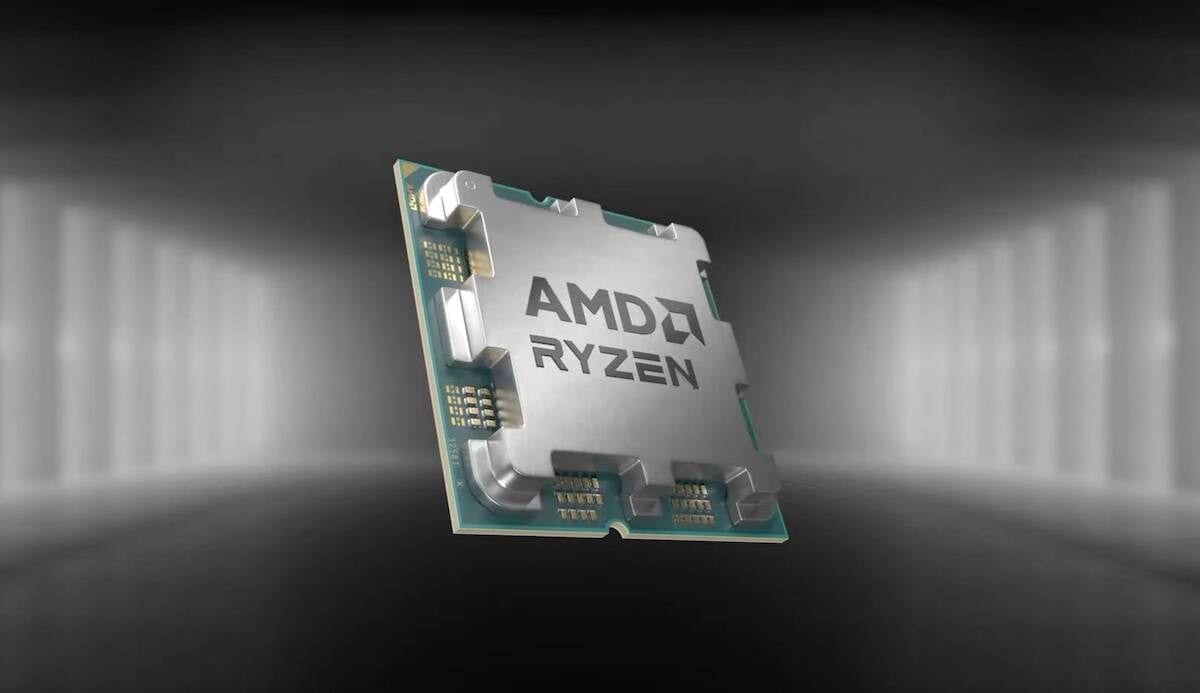AMD’s next generation of desktop CPUs launch from tomorrow, and they’ll feature lower prices than the last series.
Its Ryzen 7 9700X and the Ryzen 5 9600X parts are on sale from August 8, at $359 and $279 respectively, and the higher-end Ryzen 9 9950X and Ryzen 9 9900X are slated for August 15, priced $649 and $499.
The new Ryzen 9000 series comes almost two full years after the prior Ryzen 7000 lineup debuted. The latest processors will slot into existing AM5 socket motherboards, and support DDR5 memory and PCIe 5.0 devices just like its predecessors did.
For the new CPUs, AMD swapped out the older Zen 4 microarchitecture with Zen 5, boasting a 16 percent improvement to instructions-per-clock-tick, and now fabs the compute chiplets on TSMC’s 4nm process node, which is more advanced that the Taiwanese giant’s 5nm node used previously. As a result, the new processors come with greatly reduced thermal-design-power (TDP) values compared to Ryzen 7000.
That said, the flagship Ryzen 9 9950X and second-best Ryzen 9 9900X both have the same core count, cache amount, and frequencies as their predecessors. Similarly, the Ryzen 7 9700X and Ryzen 5 9600X only received a 100 MHz increase to their boost clocks, and are otherwise identical to the models they replace.
If the Zen architecture and process node improvements don’t float your boat, the biggest selling point AMD offers may be the pricing. Every single model is roughly ten percent cheaper than the old one; a $50 reduction for the 9950X and 9900X, a $40 cut for the 9700X, and a $30 decrease for the 9600X.
It’s the second generation in a row where AMD has reduced prices for its 16-, 12-, 8-, and 6-core models, as the outgoing Ryzen 7000 series cut prices compared to 2020’s Zen 3-based Ryzen 5000 series, which itself represented a price hike when it launched in 2020. Compared to the 2020 lineup, each microprocessor is about a hundred bucks cheaper, give or take a few tens.
It’s perhaps a sign of the times as Intel continues praying for its recovery. Although things aren’t going well for Chipzilla financially to put it lightly, the corporation, in this vulture’s humble opinion, is in a much better position product-wise than it has been in for years.
In 2019, AMD’s then-current Ryzen 3000 series boasted the first-ever 16-core mainstream desktop CPU, twice as big as Intel’s 8-core flagship at the time.
But after Intel launched Alder Lake-based 12th Gen models in late 2021, AMD responded with a flurry of entry-level alternatives in the Ryzen 5000 series, and retailers discounted existing models by substantial amounts. A year later, Ryzen 7000 released with lower prices compared to Ryzen 5000 – though Intel’s 13th Gen Raptor Lake ended up undercutting AMD and, it turns out, undercutting reliability.
Considering Ryzen 9000 features a further price decrease, it might indicate AMD’s expectation that Intel’s upcoming Arrow Lake desktop chips could be pretty competitive.
On the other hand, it’s important to remember that AMD is still the underdog when it comes to market share. Mercury Research’s latest data suggests AMD’s desktop market share as of Q2 is 23 percent, leaving Intel in the 70s and the rest trailing. That’s actually 0.4 percent lower than it was a year ago, indicating AMD has been losing ground lately.
By lowering prices, AMD could be aiming to improve its market share at Intel’s expense, whether Arrow Lake is good or not. On the other hand, AMD hasn’t really been the value choice for desktop CPUs for a few years now, and its chips are usually more expensive (excluding other platform costs). Plus, the real volume is in OEM desktops, and a price cut for the DIYers might not give AMD much of a leg up. ®

